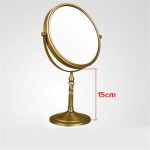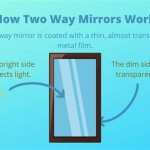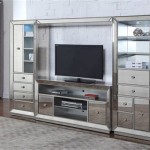Mirrored Glass Tiles Backsplash
Mirrored glass tiles offer a unique and stylish option for kitchen and bathroom backsplashes. Their reflective qualities can brighten a space, create an illusion of greater size, and add a touch of glamour. This article explores the advantages, disadvantages, installation process, design considerations, and maintenance tips for mirrored glass tile backsplashes.
Advantages of Mirrored Glass Tiles
Mirrored glass tiles provide numerous benefits that make them an appealing choice for backsplashes:
- Light Enhancement: Their reflective surfaces bounce light around the room, making the space appear brighter and more open.
- Spatial Illusion: Mirrors create a sense of depth, making smaller kitchens or bathrooms feel larger.
- Stylish Aesthetic: Mirrored tiles offer a sophisticated and glamorous look, adding a touch of elegance to any space.
- Versatility: They complement various design styles, from modern and minimalist to traditional and opulent.
- Easy Cleaning: The smooth, non-porous surface of glass is resistant to stains and easy to wipe clean.
Disadvantages of Mirrored Glass Tiles
While offering numerous advantages, mirrored glass tiles also present certain challenges:
- Smudging and Fingerprints: The reflective surface readily shows fingerprints, smudges, and water spots, requiring frequent cleaning.
- Potential for Distortion: Depending on the quality and installation, mirrored tiles can sometimes create a distorted reflection.
- Scratch Susceptibility: While durable, glass tiles can be scratched by sharp objects, potentially diminishing their aesthetic appeal.
- Cost: Mirrored glass tiles can be more expensive than other backsplash materials, such as ceramic or subway tiles.
Installation Process
Installing mirrored glass tiles requires precision and attention to detail. The process typically involves the following steps:
- Surface Preparation: The wall surface must be clean, smooth, and level to ensure proper tile adhesion.
- Adhesive Application: A high-quality, thin-set mortar specifically designed for glass tiles should be used.
- Tile Placement: Tiles should be carefully placed with consistent spacing, using spacers to maintain uniformity.
- Grouting: Unsanded grout is recommended for mirrored glass tiles to avoid scratching the surface. Choose a grout color that complements the tiles and overall design.
- Sealing: Sealing the grout helps protect it from stains and moisture.
Design Considerations
Several design factors should be considered when incorporating mirrored glass tiles into a backsplash:
- Tile Size and Shape: Mirrored tiles are available in various sizes and shapes, from small squares and rectangles to larger subway tiles and mosaics. The chosen size and shape will impact the overall visual effect.
- Grout Color: The grout color can significantly influence the final appearance. A contrasting grout color emphasizes the individual tiles, while a matching grout creates a more seamless look.
- Lighting: Proper lighting is crucial to maximize the reflective qualities of the tiles. Consider under-cabinet lighting or strategically placed spotlights to enhance the brightness and sparkle.
- Surrounding Decor: The mirrored backsplash should complement the overall design aesthetic of the kitchen or bathroom. Consider the colors, textures, and materials of the surrounding cabinets, countertops, and appliances.
Maintenance Tips for Mirrored Glass Tile Backsplashes
Maintaining the pristine appearance of a mirrored glass tile backsplash requires regular cleaning and care:
- Regular Wiping: Wipe down the tiles frequently with a soft, damp cloth to remove fingerprints, smudges, and water spots.
- Gentle Cleaners: Use a mild glass cleaner or a mixture of water and vinegar for more stubborn stains. Avoid abrasive cleaners or scouring pads, as these can scratch the surface.
- Dry Immediately: Dry the tiles immediately after cleaning to prevent water spots and streaks.
- Grout Cleaning: Clean the grout periodically to prevent discoloration and maintain its appearance.
- Avoid Harsh Chemicals: Avoid using harsh chemicals or acidic cleaners, as these can damage the tiles and grout.
Variations in Mirrored Glass Tiles
Mirrored glass tiles come in a variety of styles beyond the standard flat, silvered mirror finish:
- Antiqued Mirror Tiles: These offer a vintage or distressed look, adding character and charm to a space.
- Tinted Mirror Tiles: Available in various colors, such as bronze, gray, or rose gold, tinted mirror tiles can add a subtle touch of color and create a different mood.
- Patterned Mirror Tiles: Some mirrored tiles feature etched or patterned designs, providing a decorative element.
- Beveled Mirror Tiles: Beveled edges add depth and dimension to the mirrored surface, creating a more intricate and visually appealing backsplash.
Cost Considerations
The cost of a mirrored glass tile backsplash can vary based on several factors:
- Tile Quality: Higher-quality tiles with better reflectivity and durability will typically be more expensive.
- Tile Size and Shape: Intricate shapes and smaller mosaic tiles can be more costly due to the manufacturing process.
- Installation Complexity: Complex designs or challenging installations may require more labor and increase the overall project cost.
- Location: Labor costs can vary depending on geographical location.

Reflection Revere Mirror Tile Tilebar Com

3x6 Beveled Mirror Subway Tile In Paris Gray Tilebar Com

3 X 12 Beveled Antique Mirror Glass Subway Tile Free

Antique Mirror Tiles Backsplash Müller Designs

3 X 12 Beveled Antique Mirror Glass Subway Tile Free

Reflections Glass Mirror Beveled Wall Tile Bv And Stone Enlarge Your Space Make It Shine Kitchen Tiles Design Interior

3 X 6 Clear Beveled Mirror Glass Subway Tile

5 Stunning Mirror Tiles To Brighten Your Room Tileist By Tilebar

Antique Mirror Tiles Vintage Müller Designs

Glass Subway Tile Inverted Bevel Mirror White 2x6 Mineral Tiles








